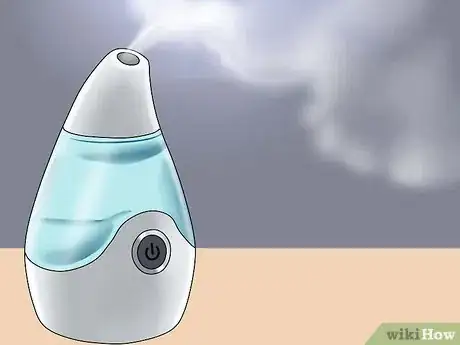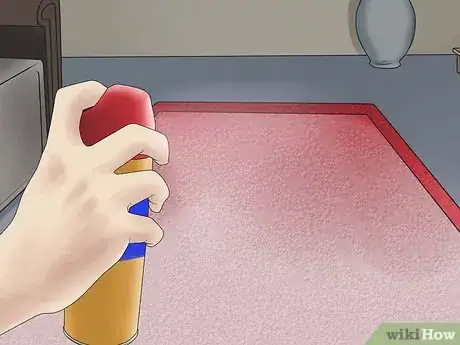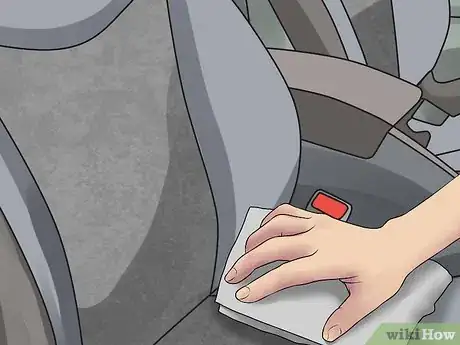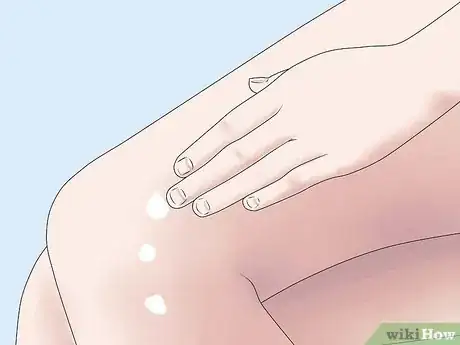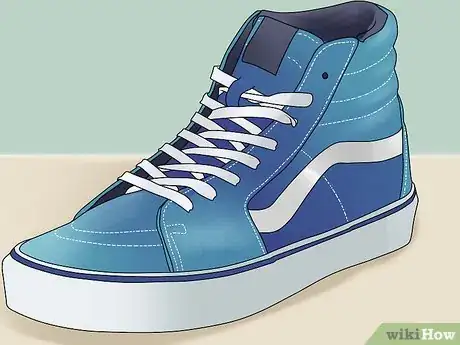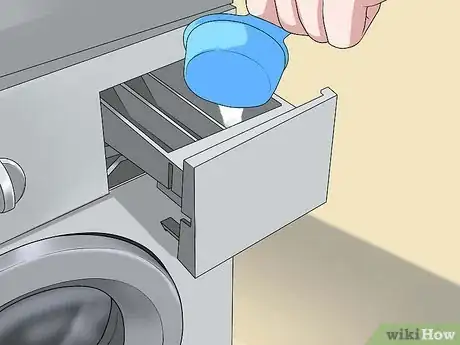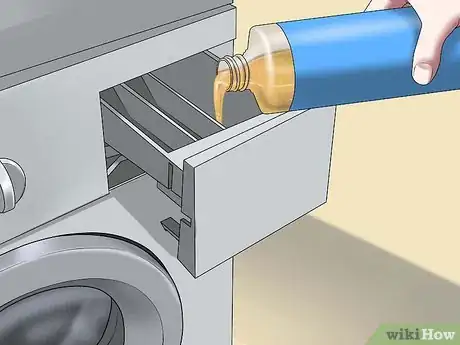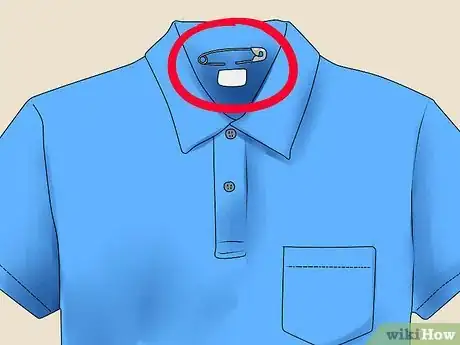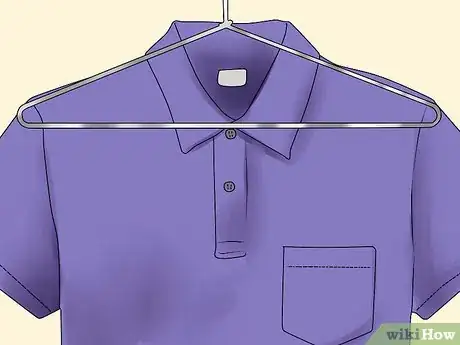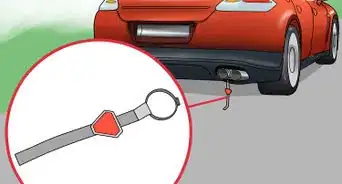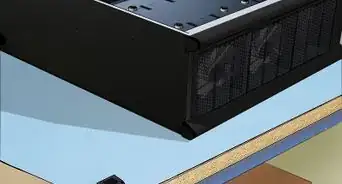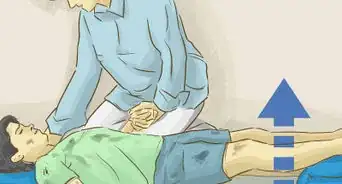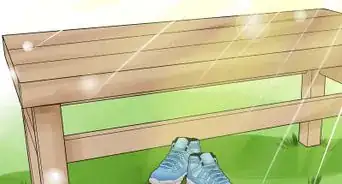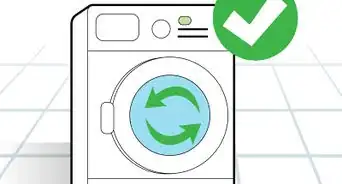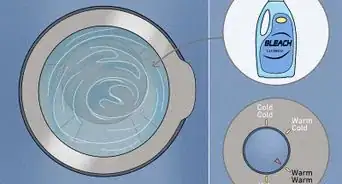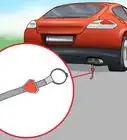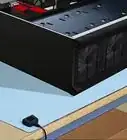This article was co-authored by Kamel Almani. Kamel Almani is a Laundry and Cleaning Specialist and the Co-Owner of WashyWash, a toxin-free and eco-friendly laundry and dry clean service based in Amman, Jordan. Kamel and his staff at WashyWash use Blue Angel certified and dermatologically-tested detergents. They also combine EcoClean and digital technology to provide an eco-friendly, convenient, and quality cleaning service. Kamel holds a BA in Design from the University of Applied Science, Amman.
There are 10 references cited in this article, which can be found at the bottom of the page.
wikiHow marks an article as reader-approved once it receives enough positive feedback. This article has 42 testimonials from our readers, earning it our reader-approved status.
This article has been viewed 2,239,025 times.
Static electricity is the build up of an electrical charge on the surface of an object, which results from unequal positive and negative charges between two objects. While static electricity may seem unavoidable and relentless, especially during the dry winter months, eliminating static electricity is a lot easier than you would think. Once you understand how static electricity is created and transferred, there are steps you can take to reduce the initial static electricity, and control how it transfers to you, reducing the electric shocks every time you touch something.
Steps
Removing Static Electricity In The Home
-
1Use a humidifier. Static electricity is more active when the air is dry, especially in the winter months when people heat their houses, further reducing humidity in the air. Increase the humidity in your house and workplace by using a humidifier. The moisture in the air can help reduce static charge from building up.[1]
-
2Treat your carpets with an anti-static chemical. Most carpet retailers or carpet companies online offer spray treatments to treat rugs and carpets. There are also some carpets that are specifically made to with an anti-static component.[3] Lightly spray your carpet with an anti-static spray, and wait for it to completely dry before walking on it. This will greatly decrease the amount of static electricity you experience after walking on the carpet.
- To make a static reducing spray at home, you can mix 1 capful of fabric softener with antistatic properties in a spray bottle of water, shake the mixture, and lightly spray over the carpet.[4]
Advertisement -
3Rub upholstery with dryer sheets. Rub upholstered furniture or your car seats with dryer sheets to reduce the static buildup on those surfaces. Dryer sheets help neutralize the electric charge.[5]
- You can also try spraying these areas with a static reducing aerosol or spray.
Removing Static Electricity On Your Body
-
1Keep your skin moisturized. Rub lotion on yourself when you get out of the shower and before getting dressed, or rub it on your hands intermittently throughout the day.
- Dry skin contributes to static electricity and static shock, so lotions and moisturizers help to prevent static electricity from accumulating on your body.[6]
-
2Change your clothes. Switch from wearing synthetic fibers (polyester, nylon) to wearing natural fibers (cotton), which are low static materials.[7]
- If your clothes are still affected by static electricity, you can rub dryer sheets on your clothes, or spritz them with a little bit of hairspray.
-
3Wear shoes that dissipate static. Wear leather-soled shoes, which are excellent for reducing static shock, rather than rubber-soled shoes, which accumulate and create static electricity.[8]
- Try experimenting with different kinds of shoes to see which shoes create the least amount of static shock. If you can, walk barefoot in the house.
- Some shoes worn by those who work with electronics have conductive strands woven into the soles of their shoes which discharge static electricity as they walk.
Preventing Static Electricity In Your Laundry
-
1Add baking soda to the wash. Add ¼ cup of baking soda to your clothes before starting the washing cycle. Baking soda creates a barrier between positive and negative charges from building up and creating static.
- Depending on the size of the laundry load, you may need to adjust the amount of baking soda you add in. For bigger loads you can add about ½ cup of baking soda, and for small loads you can use 1 or 2 tablespoons of baking soda.[9]
- Baking soda is also considered a water softener and a fabric softener.
-
2Add vinegar to the wash. When your wash machine is transitioning to the rinse cycle, pause the machine and pour in ¼ cup of white distilled vinegar. Restart the machine to continue the rinse cycle.[10]
- Vinegar serves as both a fabric softener and static reducer in the laundry.
-
3Add a damp washcloth to the dyer. For the last 10 minutes of the drying cycle, turn the dryer to the lowest heat setting, and add a damp washcloth to the machine. Allow the dryer to carry out the rest of the drying cycle.[11]
- The damp washcloth helps add moisture to the air, preventing electrical charges from building up in the dryer.
- Use wool dryer balls during the dryer cycle. Wool balls absorb moisture from clothing in the dryer, maintaining a more humid environment, and helping you get rid of static cling and friction.
-
4
Using Static Quick Fixes
-
1Attach a safety pin to your clothes. Attach a safety pin to the seam of your pants or at the back neck of your shirt. The metal of the pin discharges the electrical build-up in your clothes, preventing static cling and electrical shocks.
- Attaching the pin at a seam allows you to hide the pin, but still reap its static-reducing benefits.
-
2Run a metal hanger over clothes. Run a metal hanger on the surface (front and back) and inside of any article of clothing. This will reduce the electrical charge of the item of clothing, by transferring the electron charges on the clothes to the metal hanger.[13]
-
3Carry around something metal. Always keep some piece of metal on your person, whether it’s a coin, a thimble, or a keychain. Use any of these items to touch the grounded metal surface before you touch it with your skin.[14]
- This is also know as grounding yourself, so you never accumulate electrical charges, but the charges are instead transferred to the metal object.
Expert Q&A
-
QuestionHow do you get rid of static electricity on my clothes?
 Ayad MirjanAyad Mirjan is a Dry Cleaner and Laundry Specialist and the Founder of OrangeBag®, a toxin-free, sustainable, Los Angeles-based laundry and dry cleaning delivery service. Ayad has over four years of experience in the industry and he specializes in providing easy laundry and dry-cleaning solutions to professionals, families, and businesses. Ayad received his Bachelor's degree from The University of California, San Diego, and an MBA from Henley Business School. He is also a board member of the Entrepreneur's Organization Accelerator (EOA).
Ayad MirjanAyad Mirjan is a Dry Cleaner and Laundry Specialist and the Founder of OrangeBag®, a toxin-free, sustainable, Los Angeles-based laundry and dry cleaning delivery service. Ayad has over four years of experience in the industry and he specializes in providing easy laundry and dry-cleaning solutions to professionals, families, and businesses. Ayad received his Bachelor's degree from The University of California, San Diego, and an MBA from Henley Business School. He is also a board member of the Entrepreneur's Organization Accelerator (EOA).
Dry Cleaner & Laundry Specialist Use wool dryer balls during the dryer cycle! These balls absorb moisture from clothing in the dryer, maintaining a more humid environment and helping you get rid of static cling and friction.
Use wool dryer balls during the dryer cycle! These balls absorb moisture from clothing in the dryer, maintaining a more humid environment and helping you get rid of static cling and friction. -
QuestionCan water be used to prevent static electricity in clothing?
 Community AnswerYes, it can. Spray some water (although not too much) on the clothing and the static electricity should be gone for a while. However, the effect is only temporary.
Community AnswerYes, it can. Spray some water (although not too much) on the clothing and the static electricity should be gone for a while. However, the effect is only temporary. -
QuestionHow do I stop static electricity in my cloth chair?
 Community AnswerDrape a cotton towel over the seating area or use static spray. A little damp wipe helps if there are no other means available. Saltwater is best.
Community AnswerDrape a cotton towel over the seating area or use static spray. A little damp wipe helps if there are no other means available. Saltwater is best.
Warnings
- When handling flammable liquids or combustible dust ensure all isolated conductors of electricity are bonded together.⧼thumbs_response⧽
- Never let anyone get into or out of your vehicle while gas is being pumped, as this can cause a static buildup that can discharge when you come in contact with the metal pump, or when the nozzle comes in contact with your vehicle's fuel port.⧼thumbs_response⧽
- Store volatile materials away from areas known to cause static buildup.⧼thumbs_response⧽
- When using fabric softener on carpets and other surfaces that you walk on, be certain to avoid walking on the sprayed surface until the surface has dried. Footwear can become very slippery if fabric softener is accidentally applied to the soles of footwear.⧼thumbs_response⧽
References
- ↑ http://www.stylemepretty.com/living/2012/12/01/how-to-get-rid-of-static-electricity/
- ↑ http://www.stylemepretty.com/living/2012/12/01/how-to-get-rid-of-static-electricity/
- ↑ http://www.familyhandyman.com/electrical/how-to-reduce-static-electricity-in-the-house/view-all
- ↑ http://www.stylemepretty.com/living/2012/12/01/how-to-get-rid-of-static-electricity/
- ↑ http://www.electrostatics.net/articles/static_shocks.htm
- ↑ http://www.school-for-champions.com/science/static_shocks_reducing.htm#.VfX9l53BzGc
- ↑ http://www.stylemepretty.com/living/2012/12/01/how-to-get-rid-of-static-electricity/
- ↑ http://www.electrostatics.net/articles/static_shocks.htm
- ↑ http://www.allyou.com/budget-home/live-green-save/how-to-get-rid-of-static-cling
- ↑ http://www.diynatural.com/homemade-fabric-softener-dryer-sheets/
- ↑ http://www.stylemepretty.com/living/2012/12/01/how-to-get-rid-of-static-electricity/
- ↑ http://www.rodalesorganiclife.com/wellbeing/get-rid-static?page=0%2C1
- ↑ http://www.allyou.com/budget-home/live-green-save/how-to-get-rid-of-static-cling
- ↑ http://www.sciencemadesimple.com/eliminatestaticelectricity.html
About This Article
If you need to remove static electricity from around your home, use a humidifier or boil water on the stove to increase humidity in the air, since dry air causes static electricity to be more active. If you have carpets, spray them with an anti-static treatment, or make your own by mixing a capful of fabric softener into a spray bottle of water and spraying it lightly over your carpet. If the static is on your body, rub dryer sheets on your clothes or spritz them with a little hairspray, which will discharge the static electricity and help prevent it from building back up. If you want to learn how to get static electricity out of your laundry, keep reading!
